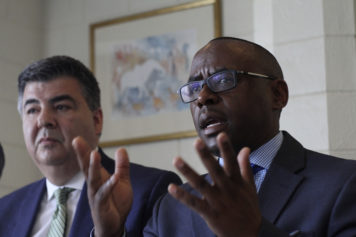It’s well known that access to clean water is a problem in many underdeveloped countries in Africa. According to the waterproject.org, nearly a billion people in the world do not have access to clean and safe water, and 37 percent of those people live in sub-Saharan Africa. That’s roughly 370 million people. Although there have been many efforts to bring awareness to the issue, someone has finally applied cutting edge technologies to help solve this problem, and are now seeing positive results.
Reportedly scientists have found enough water in Kenya to meet the country’s water needs for the next 70 years. According to itv.com:
“A massive aquifer that holds enough water to meet all of Kenya’s needs for 70 years has been discovered, ITV News can reveal. The pool, which was found more than 300 metres underground, is so large you could pour Loch Ness into it approximately 25 times.”
The water was found by scientists applying similar technologies used to find minerals, then repurposed to find water. According to theverge.com:
“The project was spearheaded by Alain Gachet, president and CEO of Radar Technologies International (RTI), a France-based natural resources exploration firm. Over the course of six months, Gachet and his team of researchers used RTI’s WATEX mapping system to survey the northern county of Turkana, one of Kenya’s driest and poorest regions.
“WATEX combines satellite and radar imagery with geographical surveys, climate maps, and seismic data to provide a comprehensive snapshot of what may lie beneath a given area of land. The technology was originally used to identify mineral reserves, but has since been used to find underground water resources — most recently in Angola, Afghanistan, and the Darfur region of Sudan, where it was used to provide water to refugees during the humanitarian crisis there.”
This is great news for Kenya, and with technologies like these in place, there is hope for the entire region.
Check out the video below.


